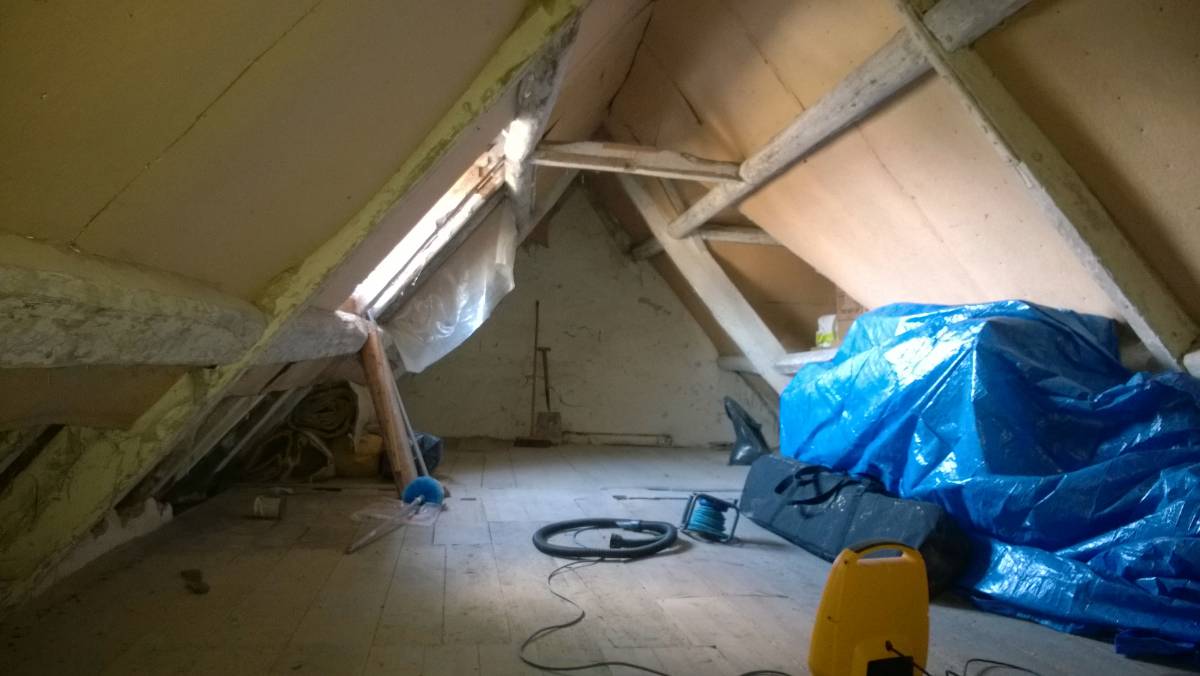Darling, It's Not Leaking...

"How was it, love?" my wife asked, a hint of hopeful anticipation in her voice. We'd been on the hunt for a new home, and I'd just returned from viewing a rather intriguing property in Lechlade. A Grade II listed house, no less. She was, quite understandably, keen to hear my comprehensive assessment.
My expert, in-depth analysis? "It's not leaking."
Perhaps not the most poetic description for what would become our beloved family home, but sometimes, the simplest observations hold the most profound truths. Especially when you're looking at a building that's stood for centuries. For me, someone who's always had a soft spot for old buildings, that immediate, pragmatic thought was actually a sign of something good. It meant the bones were there, a solid foundation for the decade-plus of passion, hard graft, and the occasional head-scratching challenge that lay ahead. It was the first, understated step on a journey that would see us navigating quirkily angled timbers, hunting down elusive English elm, and mastering the art of lime plastering, all to bring this beautiful old house back to its full glory.
A Baptism of Fire: The Reality of a Listed Home
However, the "not leaking" optimism was quickly met with a barrage of "you must do this" from the listed building authorities. Our introduction to the world of listed building consent wasn't a gentle stroll, but rather a sharp reminder that this wasn't just any old house.
It quickly became apparent that past 'improvements' were far from sympathetic to the building's heritage. At the back, we had plastic guttering, starkly out of place. The front of the house, where character should have shone brightest, was marred by plastic windows, completely at odds with its historic fabric. Inside, the modern intrusions continued: our bathroom was a humid trap with no ventilation, and to top it all off, there was a sink that had been quite literally cemented into the wall with concrete.
It was clear then, this wasn't just a home in need of a little TLC; it was a listed building yearning to breathe again, disguised by some rather regrettable alterations. This discovery only fuelled my resolve. It was going to be a monumental task, but one I was ready to embrace.
More Than Just Bricks and Mortar: A Labour of Love
And this, ultimately, is why Millie's Rustic Living was born. It's more than just a house; it's our family home, a place where Millie Moo Moo roams and where countless memories are made. Every bit of quirky woodwork, every carefully sourced Cotswold stone flagstone, every patch of lime plaster applied by hand – these aren't just repairs, they're acts of love.
There have been plenty of tears – from the sheer frustration of a tricky bit of listed building paperwork to the physical exhaustion after a long day of wrestling with old timbers. But overriding all of that is the immense passion I have for this house, for preserving its history, and for ensuring it remains a warm, inviting, and truly special place for my family. This isn't just DIY; it's a deep connection to history, craftsmanship, and the joy of creating a home that will stand for generations to come.
This isn't just DIY
And this isn't just a story about a house; it's a living project. We've come so far since the days of plastic windows and cement-bound sinks, and the journey is far from over. There are always new quirks to discover, timbers to mend, and the quiet satisfaction of seeing this grand old dame truly breathe again.
If you're embarking on your own restoration project, or simply share a love for historic homes and the challenges they present, then you're in the right place. I'll be sharing much more of our adventures, tips, and perhaps a few more of Millie Moo Moo's 'supervisory' moments right here on the blog and our socials. We'd love for you to join us as we continue to breathe life back into our cherished Grade II listed home.
What's the most unusual 'improvement' you've found in an old house, or what project are you most proud of? Let me know in the comments below!
Happy Renovating,
Paul